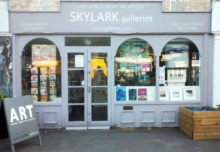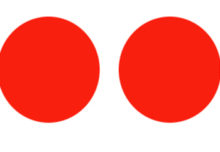THE LONELY ARTISTS
Making art is usually a one-man or one-woman operation working alone. The Gilbert and George working together system remains highly unusual. But of course the fact that most artists work alone brings up other issues.

Sharing the experience and getting criticism and praise.
One drawback of working alone is the lack of continuous critical feedback. Making art on your own can be a very satisfying, self-involved, creative experience, but an artist’s life is not totally about this ‘selfish’ act. There is another great experience coming next when you show your work to others. This is when you share, get a reaction, and maybe please a wider audience. Artists should be taking into account that this is the other purpose for making art.
Other artists are a great source of providing the initial feedback on your creativity. It could be positive or negative. Both are valuable. Working alone might deprive you of this extra dimension to making art. Plus artwork comparison with other artists work can inspire and teach you extra new skills.
This where the artist can benefit by gaining ‘know-how’ experience that many self-taught lonely artists will not.
Sharing studio workspace.
There are many examples of sharing workspace where artists have jointly taken property and divided it into small separate studios. In such a place you can mingle with other artists at a coffee machine and see how you are all individually getting on with your work, and here you let them see what you are doing.
Plus, the organization, cost, and workload would be lessened by sharing.
In my own case I have sometimes used close co-op studio space with other artists with success. I even married a fellow artist and we have shared space very well for nearly sixty years. But sometimes artists are less likely to be permanent co-workers because we are all creative, and trying to develop individually. We might want to change direction at any time as our work progresses. Or perhaps our sales system evolves. So beware of committing to financial arrangements with just a few other artists without safeguards.
However the larger established collective studio complexes do seem to work as new artists replace those who have moved on. If you can find such an opportunity near enough to you.
This does however bring up another issue. That is the cost of renting shared studio space compared to working from home. An artist using their living quarters for work will not pay much, if any, more than they would be paying already. In fact it could even be a bonus expense because some of the established cost of running your home environment can be allocated to your art business. This could mean that any income from your art activity will not show so much income as a tax liable amount. That is if you are lucky enough to actually have an income from your art that makes you develop a tax liability.
Collective selling.
There are art groups that do not share working space but share exhibition opportunities instead. This will probably be a shorter commitment, which can be renewed over and over again with new members as other ones leave.
It is worth realizing that such a joint approach with fellow artists can have huge business benefits. A bonus from sharing with other artists when arranging a collective exhibition is that each artist will invite and attract some previous buyers and collectors. These visitors to the exhibition will see all the other artists work and may expand their collection.
Shared exhibition space at art fairs or trade fairs is another example making investment possible. If you have tried exhibiting at these events you will know that the space is usually allocated in stands that would be a huge financial gamble for a single artist. They are just too expensive whereas a group can take a single unit and share the costs and space so that each artist will justify their share of the outlay. You could find out about these sharing opportunities by going to see art fairs or other group exhibitions.
Potential problems.
It is tempting for an artist who is trying to sell their work to outsource the sales business side to a manager or established dealer. This has it’s own problems. By far and away this is about the artists share of any sales income. This might the crucial fact that makes it difficult or impossible to earn enough to survive a ‘one-man band’ situation.
I have written a previous blog about some of the business problems and solutions that can arise because we are a usually one-person business. See my previous blog about this … https://www.artpublish.com/agents-managers-artists/
So a definite bonus to sharing working space or selling systems is that you still keep much of the income from doing it on your own. But at the same time, sharing some of the experience, expense, and workload with other creative people.
Other sharing ideas.
Another sharing idea would be to join an association such as the Guild Society of Artists. Here are their contact details.
Of course there is always the continuing possibility of directly sharing experience on the Internet. Maybe that is what you and I are doing here.
Cheers. Nice to meet you.



